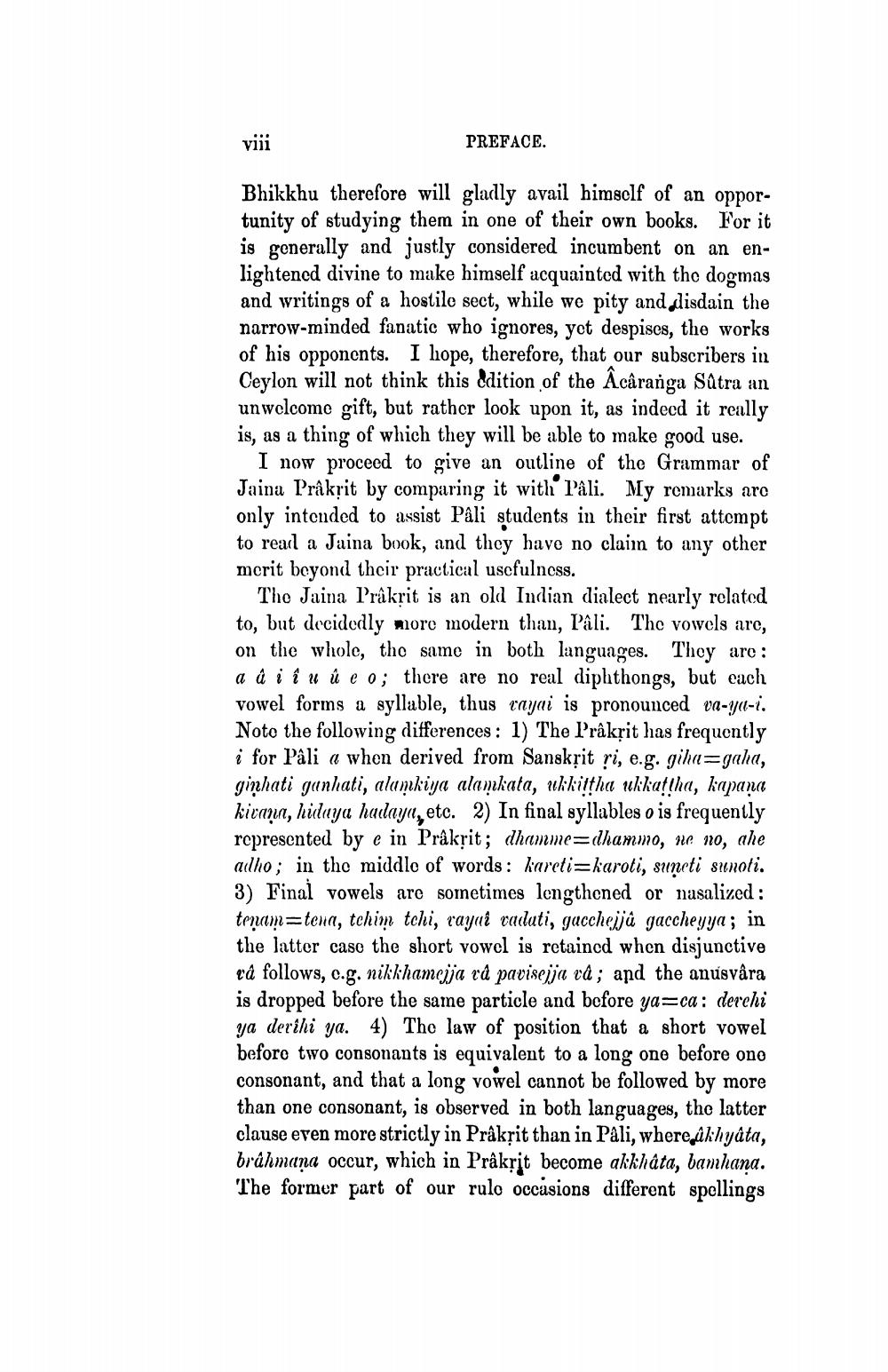Book Title: Ayaramga Sutta Author(s): Hermann Jacobi Publisher: UK Pali Text Society View full book textPage 6
________________ viii PREFACE. Bhikkhu therefore will gladly avail himself of an opportunity of studying them in one of their own books. For it is generally and justly considered incumbent on an enlightened divine to make himself acquainted with the dogmas and writings of a hostile sect, while we pity and disdain the narrow-minded fanatic who ignores, yot despises, the works of his opponents. I hope, therefore, that our subscribers in Ceylon will not think this edition of the Acâranga Sätra an unwelcome gift, but rather look upon it, as indeed it really is, as a thing of which they will be able to make good use. I now proceed to give an outline of the Grammar of Jaina Prâkrit by comparing it with Pâli. My remarks are only intended to assist Páli students in their first attempt to read a Jaina book, and they have no claiin to any other merit beyond their practical usefulness. The Jaina Prakrit is an old Indian dialect nearly related to, but decidedly more modern than, Pâli. The vowels arc, on the whole, the same in both languages. They are : a à i î u ú e o; there are no real diphthongs, but each vowel forms a syllable, thus cayai is pronounced va-yu-i. Note the following differences: 1) The Prâkrit has frequently i for Pâli a when derived from Sanskrit ri, e.g. gihu=gaha, ginhati ganhati, alumkiya alamkata, ukkittha ukkat!ha, kapana kivanın, hidaya hadaya,etc. 2) In final syllables o is frequently represented by e in Prakrit; dhamme=dhammo, ne no, ahe alho; in the middle of words : kareti=karoti, suņcti sunoti. 3) Final vowels are sometimes lengthened or nasalized : trruam=tena, tchim tchi, rayui cadati, gacchejjú gaccheyya; in the latter case the short vowel is retained when disjunctive rå follows, c.g. nikkhamcija rå pavisejja râ; and the anusvåra is dropped before the same particle and before ya=ca: derchi ya derihi ya. 4) The law of position that a short vowel before two consonants is equivalent to a long one before ono consonant, and that a long vowel cannot be followed by more than one consonant, is observed in both languages, the latter clause even more strictly in Prâkrit than in Pali, where åkhyata, brahmana occur, which in Prakrit become akkhâta, bamhana. The former part of our rulo occasions different spellingsPage Navigation
1 ... 4 5 6 7 8 9 10 11 12 13 14 15 16 17 18 19 20 21 22 23 24 25 26 27 28 29 30 31 32 33 34 35 36 37 38 39 40 41 42 43 44 45 46 47 48 49 50 51 52 53 54 55 56 57 58 59 60 61 62 ... 153
